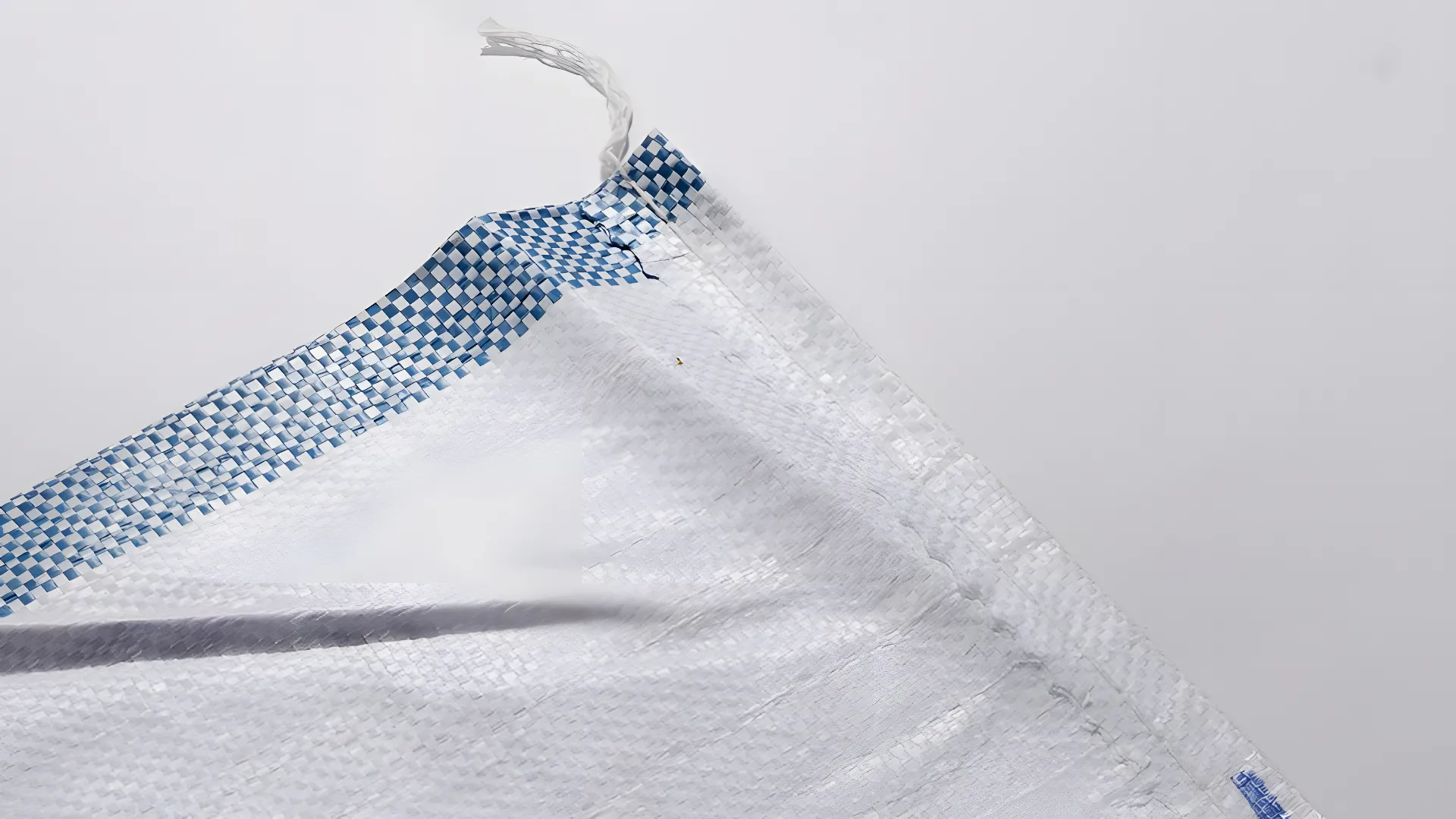Right then, let’s talk about something that’s becoming a bigger deal by the day: giving those ubiquitous polypropylene bags a new lease of life. Whether they’re the woven kind or those hefty bulk bags, recycling them is a smart move for our planet. Polypropylene, or PP as it’s often known, is incredibly versatile stuff – strong, light, and lasts for ages, which is why we see it everywhere. The tricky bit, though, is how we go about recycling it properly to lessen our environmental footprint. And that’s where a trusty plastic recycling machine really comes into its own.
Getting to Grips with Polypropylene (PP)
You’ve definitely seen polypropylene bags around. They’re the go-to for everything from your weekly shop to hauling agricultural supplies. The good news is, yes, these bags can absolutely be recycled! But, it’s not always a walk in the park due to the nature of the material itself. Polypropylene is a type of thermoplastic, which means it can be melted and reformed. It pops up in packaging, textiles, car parts, and those reusable containers we all love. It’s popular because it can take the heat, isn’t bothered by oils or chemicals, and is generally pretty tough – spot on for heavy-duty bags, wouldn’t you say?
First Things First: Kicking Off Polypropylene Recycling
To get polypropylene bag recycling right, it all starts with proper collection and sorting. Here’s a bit of a rundown on how those initial stages shape up:
- The Round-Up (Collection): First off, we need to gather all those used PP bags. This means collecting them from shops, farms, industrial sites, and local recycling centres.
- Sorting the Wheat from the Chaff: Next, the PP bags need to be separated from other plastics and any mucky bits. This can be done by hand, or with some rather clever automated systems. Getting this right is key.
- A Good Scrub (Cleaning): Any leftover bits of dirt, food, or other contaminants need to be washed off. A bit of water and some detergent usually does the trick. This step is crucial for making sure the recycled material is top-notch quality.
- Chopping it Down to Size (Shredding): Once they’re clean, the polypropylene bags are fed into a shredder and chopped into much smaller flakes or pieces. This is important because it gives more surface area for the next stages of processing.
- Melt and Remould (Pelletising): These smaller plastic pieces are then melted down and squeezed out to form small, uniform pellets. Think of them as the building blocks for new products. This melting and pelletising is where we really close the loop on recycling.
- Making Something New: Finally, these recycled polypropylene pellets are ready to be transformed! They can be used to make all sorts, from new bags and containers to garden furniture or even car components. It’s brilliant to see old materials get a fresh start.
The Heroes of the Hour: Plastic Recycling Machines
At the very heart of recycling polypropylene effectively is the plast genbrugsmaskine. These bits of kit are engineered specifically to take various types of plastic waste and, quite impressively, turn them back into materials we can use again, and all rather efficiently too.
What’s in the Toolkit? Types of Recycling Machines
There isn’t just one magic machine; it’s more like a team effort. Several key machines play their part:
- Plastgranulator: This machine is the muscle, breaking down bulky plastic items into smaller, more manageable flakes.
- Friktionsskive med høj hastighed: Does what it says on the tin! It gives those shredded plastics a vigorous clean using high-speed friction to scrub off impurities.
- Sink-Float Separationstank: A clever bit of kit that separates different plastics based on their density. Polypropylene typically floats, which helps to isolate it from denser contaminants that sink.
- Termisk tørretumbler: After washing, the plastic needs to be perfectly dry. This machine uses heat to evaporate any remaining moisture, getting it ready for the next step.
- Ekstruder: This is where the magic happens! The clean, dry PP flakes are melted and then forced through a die to create strands, which are then chopped into pellets or moulded into other useful forms.
The Nitty-Gritty: How Plastic Recycling Machines Work Their Magic
So, what’s the typical journey for a PP bag inside these machines? It generally involves crushing, washing, drying, and then extruding. Let’s break it down a bit more:
- Crushing & Grinding: The collected PP bags are first fed into the granulator. This powerful machine chops and grinds them into much smaller, uniform pieces, making them easier to handle.
- Washing & Cleaning: The shredded PP then takes a bath in the friction washer. This machine gives the plastic a thorough scrubbing to get rid of any lingering dirt, labels, or other pesky contaminants.
- Separating the Good Stuff: After washing, the plastic pieces often go into a sink-float tank. Because PP is less dense than water (and many contaminants), it floats, allowing for an effective separation.
- Drying it Off: The thermal dryer then takes over, using warm air to remove every last bit of moisture. This is vital, as damp plastic doesn’t melt and reform nicely.
- Melting & Reforming (Extrusion): Finally, the clean, dry plastic flakes are fed into an extruder. Here, they’re melted down by heat and friction, then pushed through a die to form continuous strands, which are then cut into pellets. These pellets are now ready to start a new life!
Why Bother Recycling Polypropylene Bags? The Perks are Plentiful!
You might be thinking, “Is it really worth all the effort?” Absolutely! Recycling polypropylene bags brings a whole host of benefits, both for our lovely planet and our pockets:
- Saves Our Precious Resources: It means we don’t have to use as much brand-new plastic, which in turn conserves natural resources like oil and gas.
- Uses Less Energy: Making products from recycled PP uses significantly less energy than producing virgin plastic from scratch. That’s a big win for energy conservation!
- Less Waste in Landfills and Oceans: This one’s a no-brainer. More recycling means less plastic choking up our landfills or, even worse, ending up in our seas.
- Boosts the Economy: The recycling industry isn’t just good for the environment; it creates jobs and opens up new markets and business opportunities. Proper circular economy, that is!
A Bit of Real-World Insight: My Take on Polypropylene Recycling
Having spent a good few years in and around the recycling industry, I can tell you that transforming old polypropylene bags into something new is both a fascinating challenge and incredibly rewarding. It’s genuinely brilliant to see materials that many would consider ‘rubbish’ become valuable resources. I recall one project quite vividly: we were helping set up a recycling line for those tough agricultural PP bags in a rural community. Seeing the positive knock-on effects, both for the local environment and the local economy, was something I was pretty chuffed about.
The Hurdles and How We Hop Over Them
Now, while the benefits are clear, it’s not all plain sailing. Contamination is a big headache – if bags are too dirty or mixed with other materials, it can throw a spanner in the works. Sorting everything properly can also be tricky and time-consuming. But fear not, solutions are at hand! Investing in better, more advanced sorting technology is one way forward. Another crucial part is good old-fashioned education – helping the public understand what can be recycled and how to prepare it makes a massive difference. And on the innovation front, some clever folks are even looking into biodegradable additives for PP, so if bags do escape the recycling loop, they break down a bit quicker. Every little helps!
Your Questions Answered: Polypropylene Recycling FAQs
Q1: What kinds of polypropylene bags are we talking about for recycling?
A1: Good news! Most types, including those sturdy woven PP bags (like big shopping bags or sacks for grains) and the larger bulk bags (FIBCs), can be recycled. The main thing is they need to be reasonably clean and dry.
Q2: Just how clean do these bags need to be before I pop them in for recycling?
A2: They don’t need to be sparkling, but they should be free from major contaminants. Think leftover food, chemicals, oil, and excessive dirt. A quick rinse and shake-dry often does the job and helps ensure the recycled plastic is good quality.
Q3: What about coloured polypropylene bags? Can they join the recycling party?
A3: Yes, they can! Coloured PP bags are perfectly recyclable. Just bear in mind that the colour of the final recycled product might be a bit of a mix, depending on the colours that went into the batch. Often, they’re turned into darker coloured items.
Q4: So, what amazing things can be made from my recycled polypropylene?
A4: Quite a lot, actually! Recycled PP is versatile. It can be turned into automotive parts (like bumpers and battery casings), new packaging materials, textiles (like ropes or carpets), garden furniture, compost bins, and even some construction materials.
Q5: How much energy are we really saving by recycling polypropylene? Is it significant?
A5: It really is! Recycling polypropylene can save a whopping amount of energy – some estimates say up to 88% compared to making brand new plastic from virgin oil and gas. That’s a massive reduction in our carbon footprint.
Q6: Beyond energy, what are the other big green ticks for recycling PP bags?
A6: There are plenty! It drastically cuts down on plastic waste cluttering up our environment, conserves those precious fossil fuel resources, and significantly lowers the greenhouse gas emissions that come with new plastic production. It’s a win-win-win!
Wrapping It Up: The Future is Recycled Polypropylene
So, there you have it. Recycling polypropylene bags, whether they’re woven carrier bags or hefty bulk bags, is a cornerstone of building a more sustainable world and easing the burden on our environment. With the help of specialised plastic recycling machines, we can efficiently transform this plastic waste into valuable resources, ready for a new life. By facing the challenges head-on and embracing clever technology and good practices, we can really boost our recycling game and pave the way for a much greener, cleaner future. Cheers to that!



